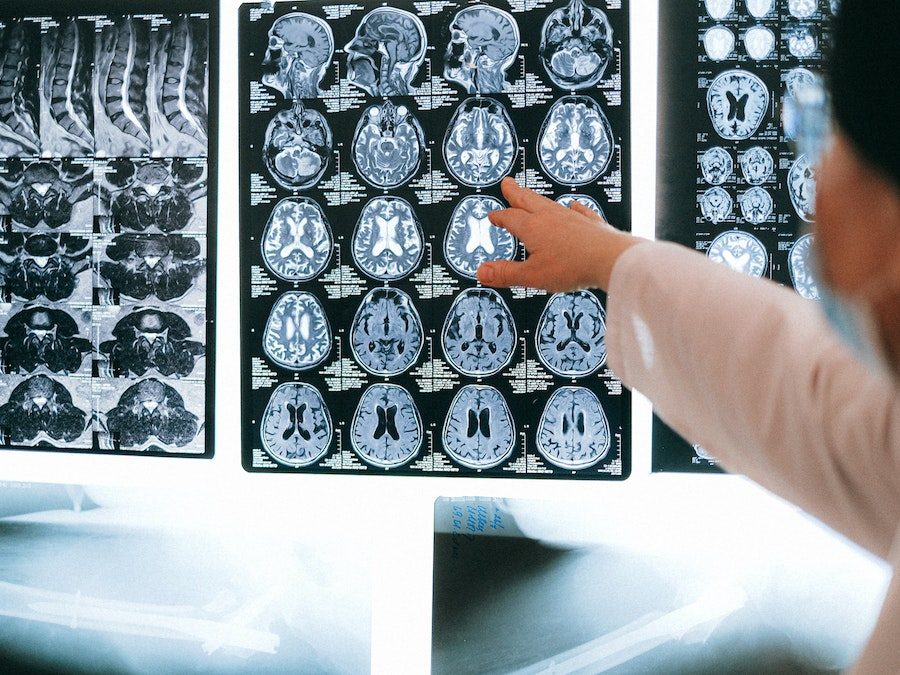


Understanding frontotemporal dementia is vital for patients, families, and medical professionals to recognize the characteristic symptoms better.
It must be distinguished from related disorders and provide the most effective care and coping strategies for these challenging conditions. This type of dementia dramatically impacts personality, behavior, language, and movement.
Frontotemporal dementia (FTD) refers to a group of disorders caused by nerve cell loss in the frontal and temporal lobes of the brain. As these brain parts shrink, it leads to problems with personality, behavior, language, and movement.

There are a few main types of FTD that cause different symptoms:
This is the most common type of FTD. It causes significant changes in personality and behavior like:
This type affects language abilities, including:

The exact underlying causes of frontotemporal dementia are still unknown. However, researchers have identified some genetic mutations that can contribute to developing FTD.
Mutations in genes such as C9orf72, GRN, and MAPT have been associated with increased risk of FTD. People with these genetic mutations often develop FTD at a younger age, ages 40-50.
However, over 50% of people diagnosed with FTD have no family history of dementia or known genetic mutations.
While these genetic markers increase risk, they do not guarantee that someone will develop FTD, even within families. Environmental and lifestyle factors likely also play a role.
The only definitive risk factor for developing frontotemporal dementia is having a first-degree relative, such as a parent, sibling, or child with dementia.
People with a family history of FTD or related disorders are at higher risk of developing the disease later in life.
Researchers continue to study FTD’s complex genetic and molecular mechanisms to understand causes better and identify potential targets for future treatments.
Increased genetic testing can also help identify inherited mutations earlier in people with a strong family history. But more work is still needed to determine precisely why some with high-risk genes develop FTD, and others do not.

Since there is no definitive test for frontotemporal dementia, diagnosis involves a complete medical evaluation of the patient’s history, neurological exams, and brain imaging scans.
Doctors will perform a thorough neurological exam assessing mental status, memory, language, motor skills, reflexes, coordination, and gait. They will look for any indicative neurological symptoms like repetitive movements, muscle weakness, or speech problems.
The physician will also take a complete patient history from the patient and close family to understand when symptoms started, how they have progressed over time, and any changes in behavior, personality, or language abilities.
Brain scans like MRI and CT scans can detect any visible shrinking or atrophy in the frontal and temporal lobes characteristic of FTD. PET scans can also measure brain activity and function.
These neuroimaging tests support a diagnosis when correlated with observed neurological and behavioral symptoms.
There are no definitive biomarkers to diagnose FTD. Doctors synthesize findings from the neurological workup with the patient’s history and description of symptoms.
They look for the core early features of FTD, like inappropriate behaviors, personality changes, and language deficits, to determine if FTD is the most likely cause.
Early diagnosis allows patients to implement therapies and plan for future care needs more effectively. However, FTD can still be difficult to differentiate from early-stage psychiatric conditions or other neurodegenerative diseases.
Diagnosis requires specialized expertise in dementia disorders.

Unfortunately, no treatments are currently available to cure or slow the progression of frontotemporal dementia. Research into effective pharmacological treatments is ongoing, but we still cannot stop or reverse the underlying nerve cell degeneration.
Doctors can prescribe medications to help manage specific behavioral and psychological symptoms associated with FTD. Antidepressants may be used to treat apathy, anxiety, or compulsions.
Antipsychotic drugs can reduce agitation, aggression, or inappropriate social behaviors. Sedatives and sleep medications can help with insomnia or other sleep disturbances.
Other therapies like speech therapy, occupational therapy, and physical therapy can also help maintain functioning abilities and adjust to the disease. Speech therapy focuses on continuing to use and strengthen language skills.
Occupational and physical therapy uses exercises and adaptive techniques to sustain independent living skills, movement, and coordination.
A dementia care specialist and support team are crucial to providing comprehensive care and coping strategies. Home care aides can assist with activities of daily living.
Social workers connect families with community resources and support services.
Over time, frontotemporal dementia inevitably worsens, and people require increasing levels of care. Eventually, 24/7 nursing care or supervised living in an assisted facility or memory care home may become necessary in the advanced stages.
However, early diagnosis and therapies can help delay progression and improve quality of life.

While frontotemporal dementia and Alzheimer’s disease both lead to progressive dementia, there are some critical differences in symptoms and disease characteristics:

FTD refers to disorders caused by frontal and temporal lobe nerve cell loss. It leads to symptoms like dramatic behavior, personality changes, or progressive language problems.
While various treatments can help manage symptoms, there is currently no cure for FTD. An increased understanding of the differences between FTD and Alzheimer’s can help with early diagnosis and coping with this challenging disorder.
What are the most common symptoms of FTD?
FTD’s most common early symptoms are changes in personality and behavior, such as increased impulsivity, apathy, lack of empathy, and inappropriate conduct.
FTD can also cause progressive difficulties with speech and language, like reduced vocabulary or hesitant speech.
What causes FTD to develop?
The exact causes of FTD are still unknown. In about a third of cases, genetic mutations play a role.
Having a family history of dementia is the most significant risk factor. But for many, the cause is unclear.
How is FTD diagnosed?
There is no single diagnostic test for FTD. Doctors diagnose based on a complete evaluation of the patient’s medical history, neurological exam, description of symptoms, and results of brain imaging scans.
Is FTD fatal?
FTD itself is not directly fatal, but it worsens over time, leading to complications that can be life-threatening.
In later stages, difficulty swallowing or infections become more likely. But with proper care, many live for years with FTD.
What is the life expectancy for someone with FTD?
It varies significantly, but the average life expectancy after diagnosis is 7-13 years. Progression is often faster than Alzheimer’s disease.
How is FTD treated?
There is no cure yet, but medications and therapy can help manage symptoms and maintain quality of life. Supportive care from family and professionals also makes a difference.
What is the difference between Alzheimer’s disease and FTD?
While both cause dementia, FTD tends to occur at a younger age. It also affects behavior and personality more often, while Alzheimer’s initially impairs memory and thinking abilities.